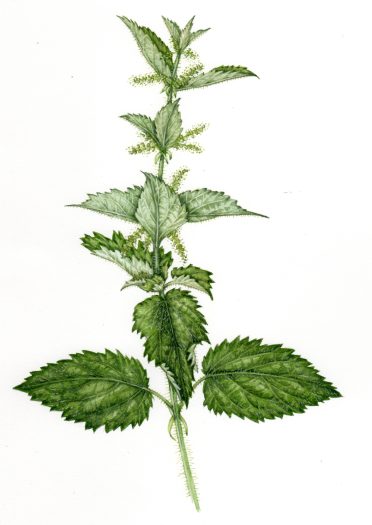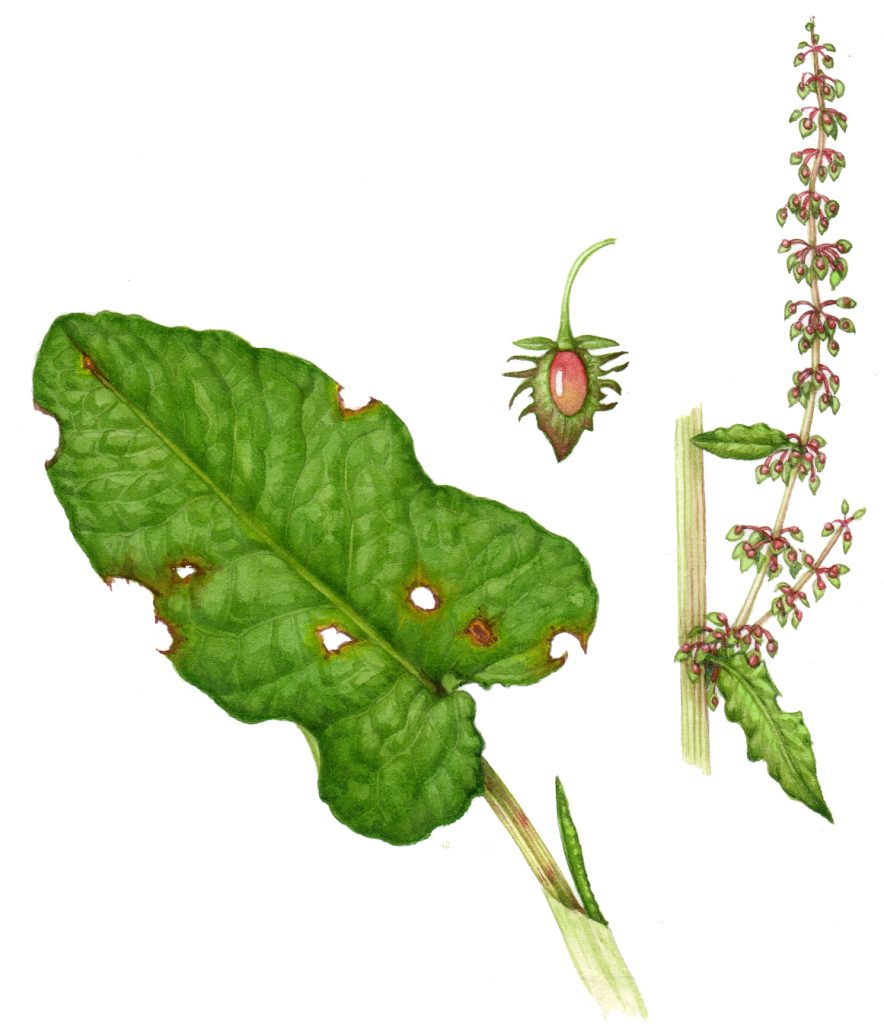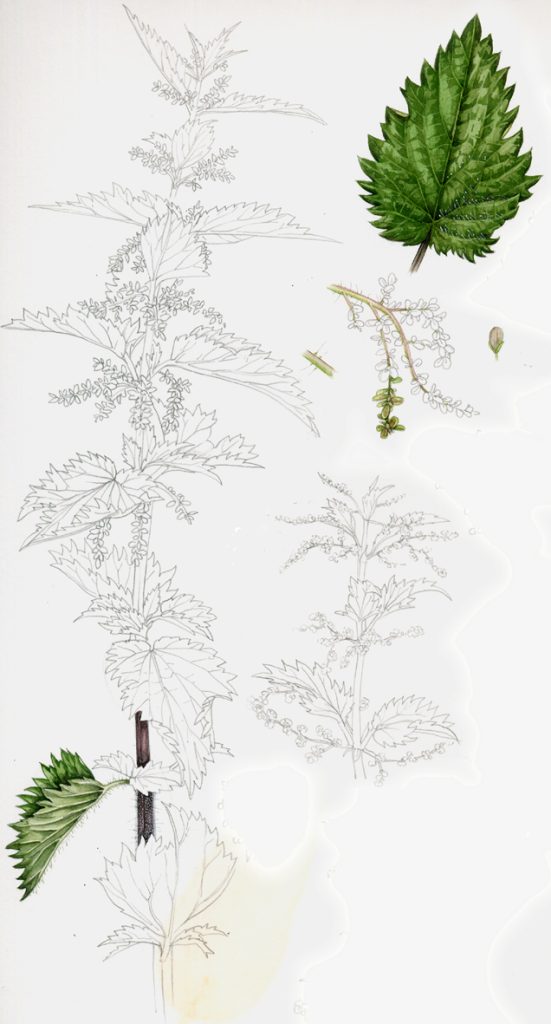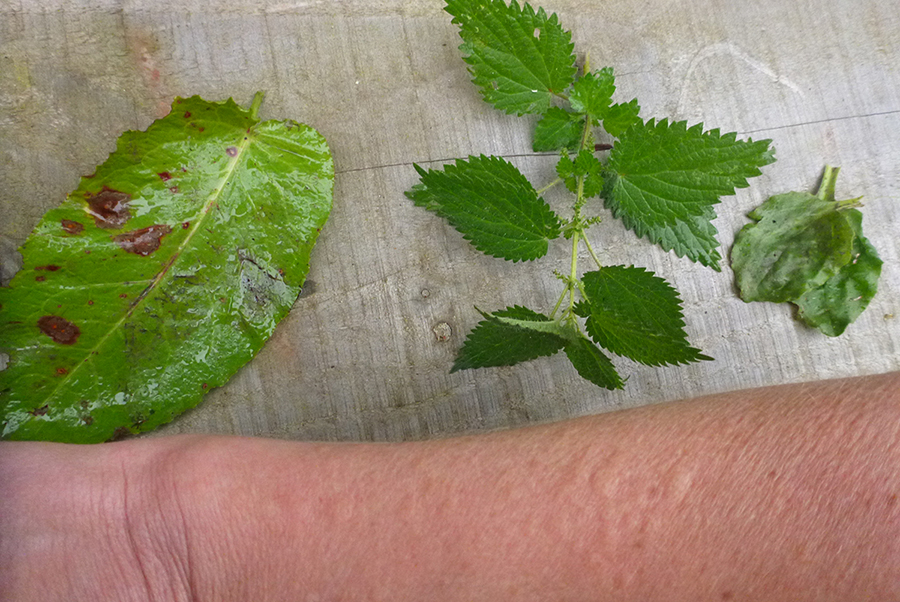Botanical Illustrator tests Nettle sting

The other week, I went on a foraging expedition with Adele Nozedar who wrote The Hedgerow Handbook and The Garden Forager (both of which I illustrated). She mentioned that plantain is better for treating nettle stings than the traditional favourite, dock.

Ribwort plantain Plantago lanceolata
This led to a lively discussion on Twitter where other possible “cures” for stings were offered.
Helping a sting: Dock leaves
The traditional cure, familiar to young and old, is to rub dock on the sting.

Helping a sting: Another nettle?
Then a seemingly absurd idea came in from Willows Hedgehog rescue, Jax Blunt, and Adam Long – rub another nettle leaf on the site of the sting. This was getting interesting.

Common or Stinging Nettle Urtica dioica; sketchbook study
Ian Ralphs of the HBIC posited that perhaps it was merely the rubbing action that had an effect on the sting site, after all, it would be spreading the poison?
Then going and getting stung on purpose was suggested by Trevor Dines of Plantlife Cymru (and everyone else involved).
Testing the theory
I know my duty, and in the name of science (and actually because I was interested) I presented my four limbs to a patch of nettles. One arm was treated with dock, one with crushed nettle. One leg was merely rubbed, and the other leg was smeared in crushed plantain.

Photo of dock, nettle, and plantain leaves along with the my stung arm.
My family backed away in horror and disgust (“What is WRONG with you, Mum?”), so I was left in peace to compare my results.
And there was indeed a clear winner! The simple act of rubbing the sting was useless. The plantain had a small effect. The dock was better than the plantain, but without a doubt the nettle leaf on the sting was the best cure.

Sting treated with dock (on the left); treated with another nettle (on the right).
The stings treated with another nettle were noticably less red and produced marginally less swelling than those treated with any of the other suggestions. They also tingled and hurt for a slightly shorter time.
The nettle winning as a “cure” has an advantage since if you’re stung you will inevitably be able to find a curing companion leaf almost immediately.
However, you may not get the benefit of being distracted from your pain as you stray about, scouring the fields for a dock leaf….

Is this a sound experiment?
The Poison Garden suggested eating nettles to counteract the effects. However, this suggestion came in after my trial so I’m afraid I didn’t test it out. Next time I get stung, perhaps?
I want to point out that there are so many variables in this “experiment” as to make it pretty useless. Was each limb stung exactly the same number of times and with the same concentration? Does an individual’s response to the different plants used vary from individual to individual? Was there a psychological effect at work as well – what if I wanted the nettle-on-nettle treatment to work (because the idea of it amused me most)?
However, I’ve come to two conclusions. First, when I get stung again I’ll be rubbing it with another nettle. And second, I will not be repeating this experiment any time soon, I was tingling for hours!

